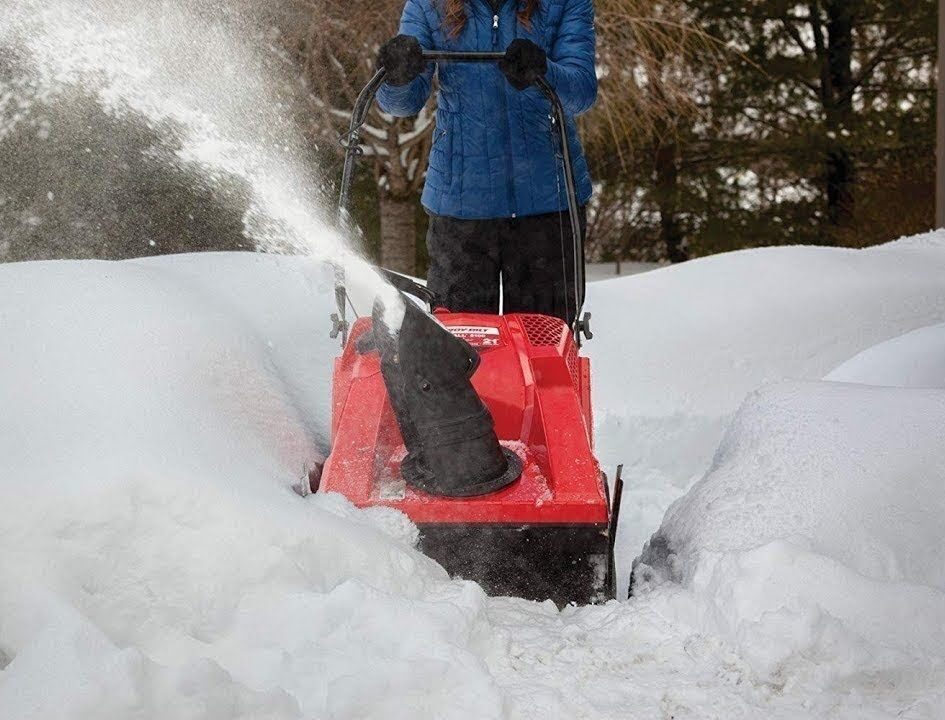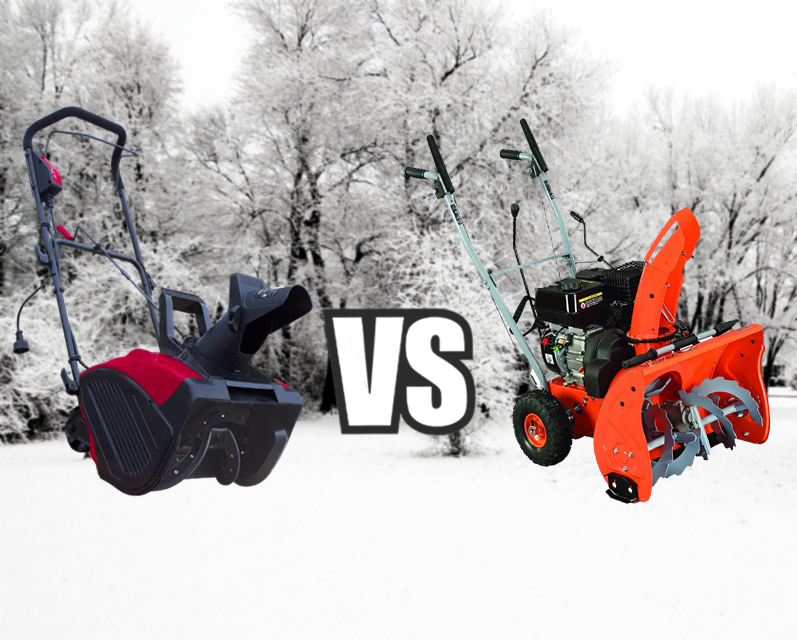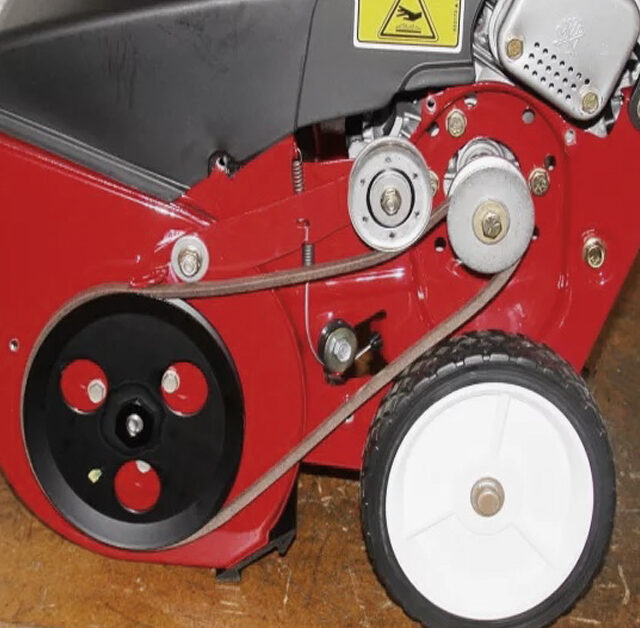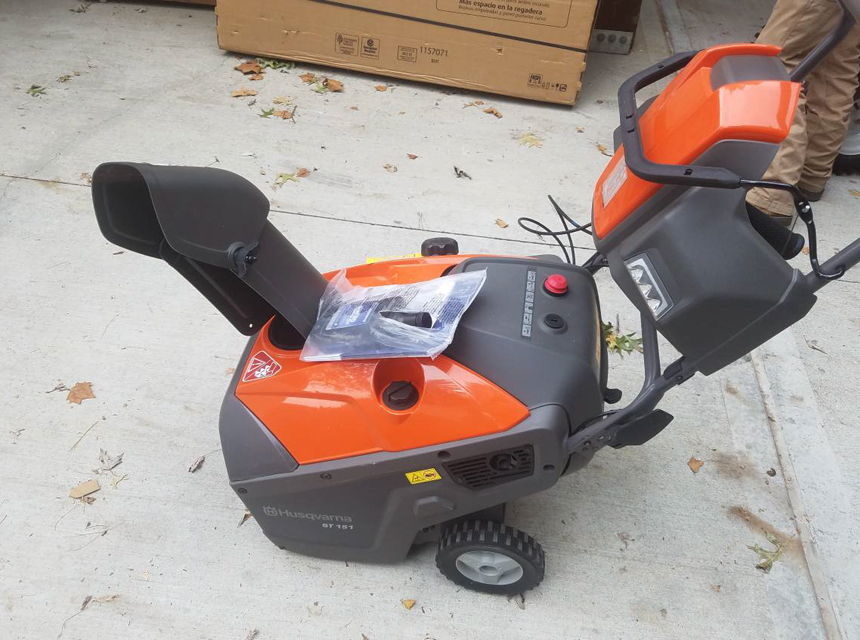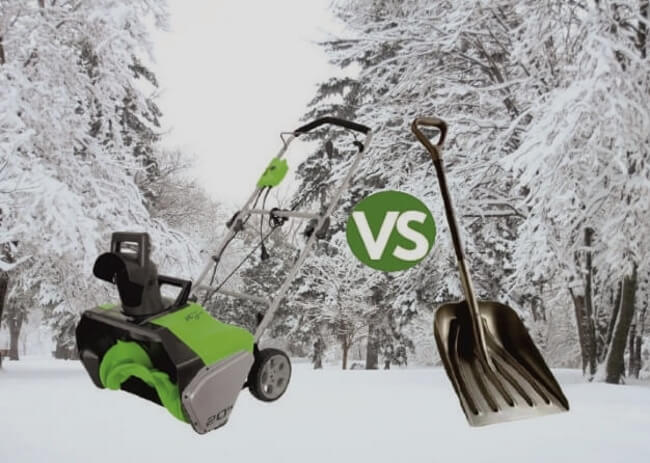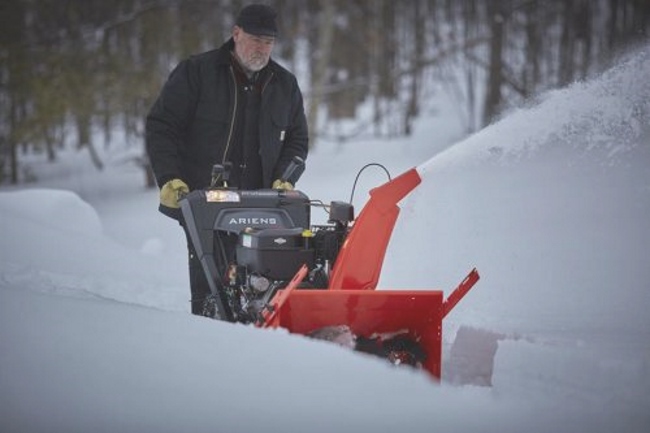
That’s it, this is the year that it happens. After years of shoveling the driveway “by hand,” you have made the big decision to buy a snowblower to face the next snowy winter. Yes, but which one do you choose?
Well, there are one, two, and three-stage snow blowers, but the two and three-stage models are the most widely used. So, what’s the difference between two-stage and three-stage snow blower types.? In this two-stage vs three-stage snow blower comparison article, we’ll see the advantages and disadvantages of both and then do a side-by-side analysis. But first, what does the stage mean?
The “stages” cited refer to the number of degrees existing in the snow removal operation of this device. Even if a three-stage also includes three worms as an example, one version uses a wheel and a worm for the tracks.
The two-stage snow blower is great for those who have a moderate amount of snow in their area. It works best in areas that usually acquire an accumulated 3 to 15 inch thick snow. One of the advantages of two stage snow blowers is that they can break up frozen, wet, or heavy snows.
The 24-Inch Dual-Stage Snow Blower by Briggs and Stratton remains the most popular two-stage snow blower in the industry, thanks to its left side chute and the electric start push button.
The two-stage snow blower is more suitable for larger terrains. In the first stage, the snow is crushed by the intake auger. In the second step, this is specifically transported to the impeller of the snow blower and ejected over the “chimney”. You can usually turn this by a maximum of 190 degrees to determine for yourself where the snow should land. The working speed can be adjusted to the snow conditions at different speed levels.
The 3-stage snowblower is for those who have to move a lot of snow. These could be used in the heaviest snowfall, able to transfer in an inch. This is the best choice, regarding the power criterion and certainly the final choices available on the market. It is not intended for someone who owns a lawn, for example. Three stage snow blowers are the most advanced snow blowers as they have more parts and components.
The biggest problem of the three-stage snow blowers is maintenance. All users will have the option to perform their maintenance on smaller snowblowers, but with all three-stage snowblowers, you’ll need assistance taking the equipment apart and taking care of each part.
Another disadvantage lies in the complexity of the mechanism, which can be difficult to disassemble and reassemble without expertise or manual. However, three stage snow blowers clear snows faster Trusted Source Three-Stage Snow Blowers Are Quicker at Clearing - Consumer Reports Three-stage snow blowers are just the right machine for wet, heavy snow. Here are some recommendations from Consumer Reports. www.consumerreports.org .
According to most reviews, the Arnold 19A40024OEM, designed by MTD is by far one of the most reliable and time-proven ones. It is 25% faster than a traditional two-stage snowblower.
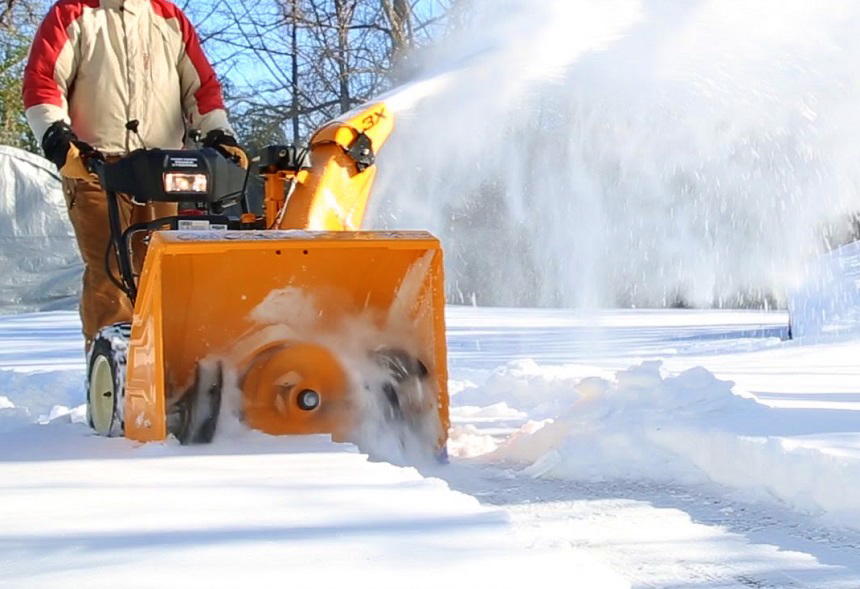
In the middle of the clearing housing, the x-shaped single screw is turned by 90°. The toothed wheels work their way effortlessly through the snow like a drill. To the left and right of it, more snow clearing screws work to guide the snow towards the center. In this way, the snowblower achieves an even result when clearing. The snow is then fed through a turbine wheel behind the augers to the adjustable discharge chute. The snow is ejected in a high arc from the clearing surface with the metal discharge channel, which is shaped steeply upwards.
The strengths of the three-stage snow blower make it the most efficient. You can optimize the clearing housing with an enlarged top edge. As a result, the snow that has been picked up is processed better.
Here’s a summary of the differences between the two types of snow blowers and the snow/areas they’re suitable for:
| Two-stage snow blowers | Three-stage snow blowers | |
| Snow height | Up to 23.5″ | Up to 23.5″ |
| Snow type | Wet or heavy snow | Wet or heavy snow |
| Clearance width | 20 to 38 inches | 24 to 30 inches |
| Area | Paved or gravel | Paved or gravel |
| Inclination | Average inclined | Average inclined |
| Snow throwing distance | 24 to 50 feet | Up to 50 feet |
As you can see, bigger isn’t necessarily better, which is why it’s important that you understand if it’s the three-stage or even two-stage snow blower that’s likely to come in handy. The difference between the two is that the three-stage has more horsepower than the size of the motor and often the two-stage model due to the worms. While both are capable of heavy snow removal and can remove snow within 49 feet of your target area, only the three-stage comes with a throttle.
The snow blower’s accelerator may speed up the snow removal procedure. It is simply the stage 3 that is effective in creating the process that goes through the worm while both versions are going to have an intake section with worms to push around the stuff. Applying this logic, no option will be faster than the stage 2.
The main advantage of this model is the regularity of use. A snowblower will undergo stops. These versions are used by businesses for a reason as they make it easier to clean a parking lot if a plow is not offered.
But can a two-level and also a three-level model have the same design? Well, all versions will have a minimum of one worm gear and one wheel when it comes to snowblower layout. You will have more than one worm, but you will have a wheel when you go up in devices like the two and three stages.
Even though the three stages have complex construction and features, they work similarly. Sometimes a three-stage, high-speed snow blower can blow through snow as far as almost 100 feet away, making it well suited for industrial enterprises, businesses, and anyone residing in a huge area.
In this section, we will show you what to consider before buying a snowblower, while comparing both types of stages.
As far as the processing width is concerned, petrol-powered two-stage snow blowers generally have a wider range. Whether you need a processing width of 727.5 inchesat all depends again on the area of application of your snowblower. Wide snow blowers can also be very impractical for clearing narrow sidewalks. But when it comes to cleaning large areas, they save a considerable amount of time.
The processing depth also says how high a snow layer can be so that it can be cleared with the respective snowblower. The expected snowfall is primarily decisive here. High-quality snow blowers often offer you a working depth of more than 19.5 inches. However, if you are not expecting heavy snowfall, you can also resort to one of the cheaper two-stage models. These usually have a processing depth of around 12 inches.
The correct throw height also depends on the area that you want to clear with your new snowblower. Many three-stage snow blowers have a throwing distance of up to 49 feet, which is not necessary for cleaning a sidewalk. Here 13 to 16 feet are enough, as is the case with many inexpensive snow blowers. For larger areas, however, a long discharge range can be very advantageous.
Most snow blowers have a throw angle of 190 degrees, which throws the snow in a high arc towards the target location. For the most flexible use possible, it can be an advantage if the ejection angle of your snowblower can be adjusted.
It is also important that your new snowblower is easy and comfortable to start, use, and maintain. The two-stage snow blowers edge out the three-stage models in this aspect.
However, you should first and foremost ensure that all controls are in an easily accessible position. An automatic switch-off function can also be advantageous for your convenience. Because this ensures that your snow blower will not be damaged on uneven surfaces.
LED lights can also pay off if you have to evacuate your driveway in the early hours of the morning. Halogen lamps, which are often built into cheap snow blowers, are less suitable due to their higher maintenance requirements.
When it comes to maintaining and cleaning snow blowers, the electrically powered models have proven to be much more user-friendly. Cleaning is only necessary here if necessary. With motorized snow blowers, however, regular maintenance is recommended, as this can significantly increase the service life of the device.
When it comes to maintenance, the three-stage snow blowers have more complicated processes and are best disassembled, assembled, and maintained by a technician, unlike a two-stage snow blower which can be maintained by simply following the manual.
The maintenance of your snowblower is primarily about the engine. This should be cleaned thoroughly at least once a year. This also includes changing the oil and cleaning or replacing the air filter. In the best case, you do this right at the beginning of spring so that you can store your snowblower dry and safe over the summer.
Also, you should regularly check your snowblower’s fan belt. This should always be taut for optimal power transmission. Otherwise, it can lead to drastic drops in performance.
If the snow is wet, the chimney of your snowblower can always ice up. To be on the safe side, do not put your hand into the fireplace. Better to use a simple tool like a broomstick or stick.
Both the two-stage and three-stage snow blowers are easy to handle than the one-stage snow blowers. A particularly pleasant additional function is the grip heating, available in both versions. This keeps your hands pleasantly warm even during long evacuations.
The handlebars are an element that should not be overlooked when choosing a snowblower. As it is a tool that can be used with both hands, the handles must therefore be very ergonomic for better handling. Asides from the models with heated grips for even more comfortable handling, others even have LED lighting for better visibility at dawn or dusk. Also, the handlebars should be foldable for bulk and easy storage.
Both the three-stage and two-stage snow blowers are easy to use through one-handed power steering. As earlier mentioned, they’re easier to steer than smaller and the less powerful ones stage snow blowers.
Horsepower is a determining factor when it comes to purchasing a snowblower. This is a variable depending on the model. This determines the performance and speed of the device. The thermal versions are the most powerful and are ideal for clearing heavy snow.
We advise you to opt for power between 3 and 5 HP which is sufficient to clear snow from your driveway as well as the average entrances. Electric snowblowers are more suitable for light or moderate snow that invades a balcony or a small driveway.
However, it is preferable to choose a model with a power of around 2,000W for better efficiency. Finally, for cordless snow blowers, choose a machine with a voltage of at least 40V.
The dimensions of the snowblower are also among the characteristics to consider. As with the power, you must take into account the terrain and the use you give to the tool.
The three-stage snow blowers are often larger, weightier, and more complex in construction than two-stage models.
For special use on a small to medium driveway, we recommend a model with a width of 24 to 28 inches and a clearing length of 18 to 20 inches. These have better handling and easy storage. Beyond that, the machine will be more difficult to handle and bulkier.
As you could see, both have their advantages and disadvantages. The purpose of use will help you make the right choice. Regardless of the stage of the snowblower, you’re choosing, when it comes to your new snowblower, it is important that it exactly meets your requirements. To be able to get the best device, there are a few factors to look out for before buying. We would like to explain these to you in the following section.
Your new snowblower should be powered primarily by the area you intend to clear with it. All stages are available in both versions. If the work area is just the driveway to your garage or the sidewalk in front of your house, an electric snow blower is usually sufficient, which also means that the purchase costs are lower.
If you decide to buy an electric snow blower, you need to consider whether you need an integrated battery. However, if there are sockets available in the work area, this is not necessarily necessary.
If you have to clear large areas of snow or live in higher regions and expect heavy snowfall, a petrol-powered snowblower is recommended. The acquisition costs are a bit higher here, but you get a flexibly usable device that reliably clears even thick layers of snow if necessary.
The most reliable snowblowers have the most features. For example, you will find models that have a 180° swivel discharge chute for more control. Some devices with a safety button turn off automatically if you do not hold their handles.
You can also find snowblowers equipped with drift cutters on the market. These are more efficient and faster on snowbanks. As for the models offering forward and reverse gears, they are especially useful when there is a lot of snow to be cleared.
In any case, regardless of the choice made, to guarantee efficiency, you should always use your snowblower immediately after the snowfall. Because the softer the snow, the easier it is to remove it.
If you want to save yourself muscle power in addition to time, you should make sure that the motor of your snowblower not only drives the intake auger but also the wheels.
Our two-stage vs three-stage snow blower comparison article reveals they have almost the same basic mechanism. Both versions are often self-propelled. They differ in the augers in the plane, which has an impact on the power and strength of each. If you live in an ordinary area that gets minimal amount of snowfall, the version will work best for you.
If you need to clear an impressive amount of land quickly and you have snowfall, consider stage three snow blowers. Remember that maintaining it yourself isn’t an easy task and you will have to spend more money.
